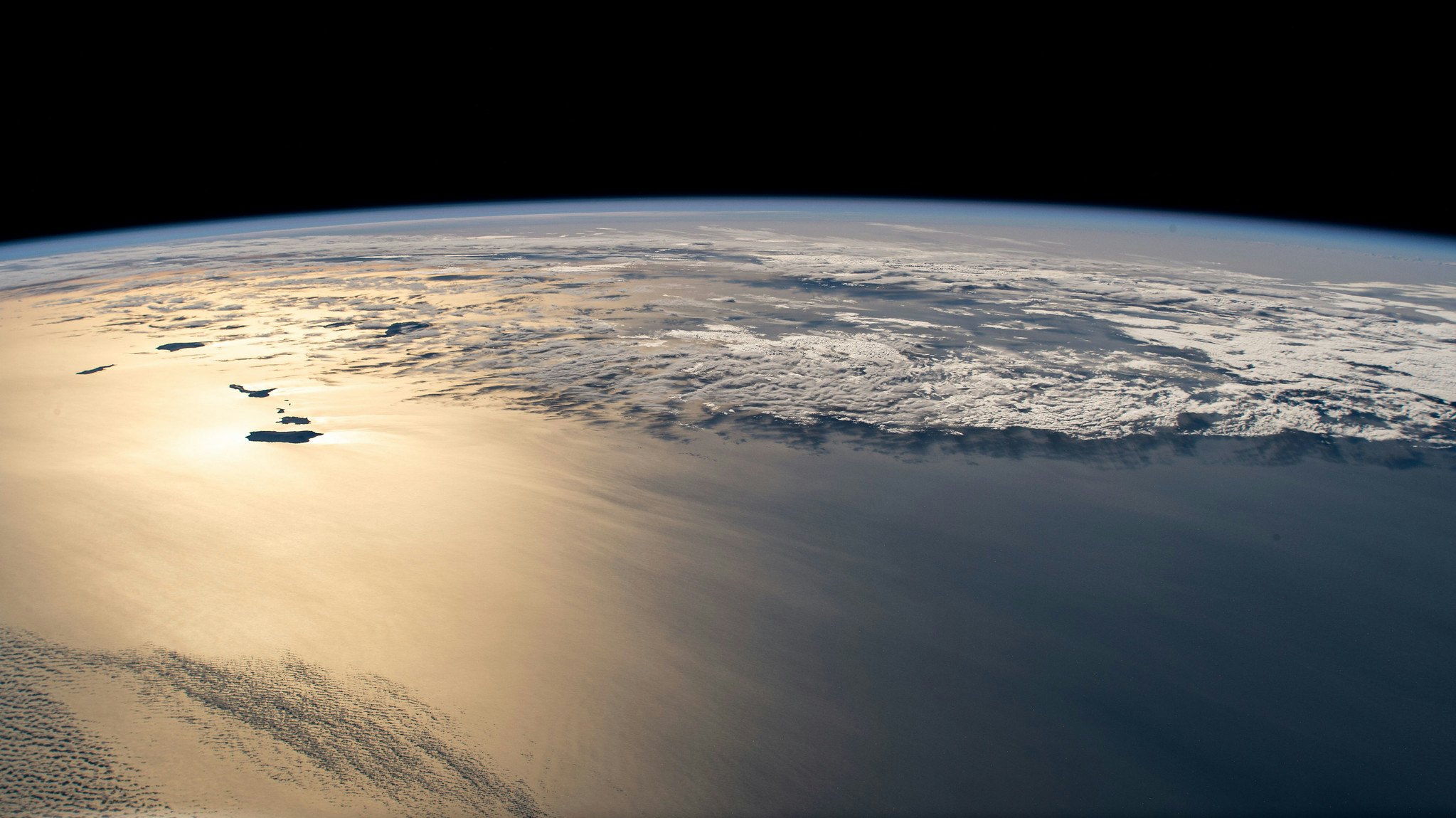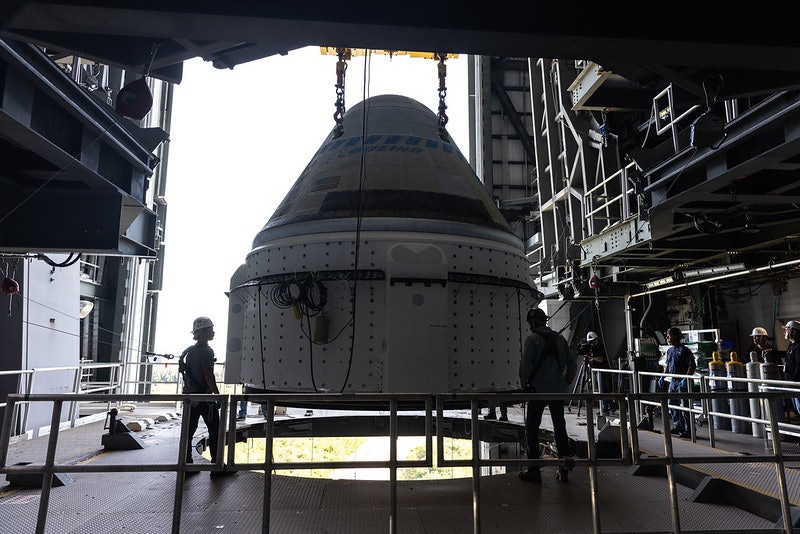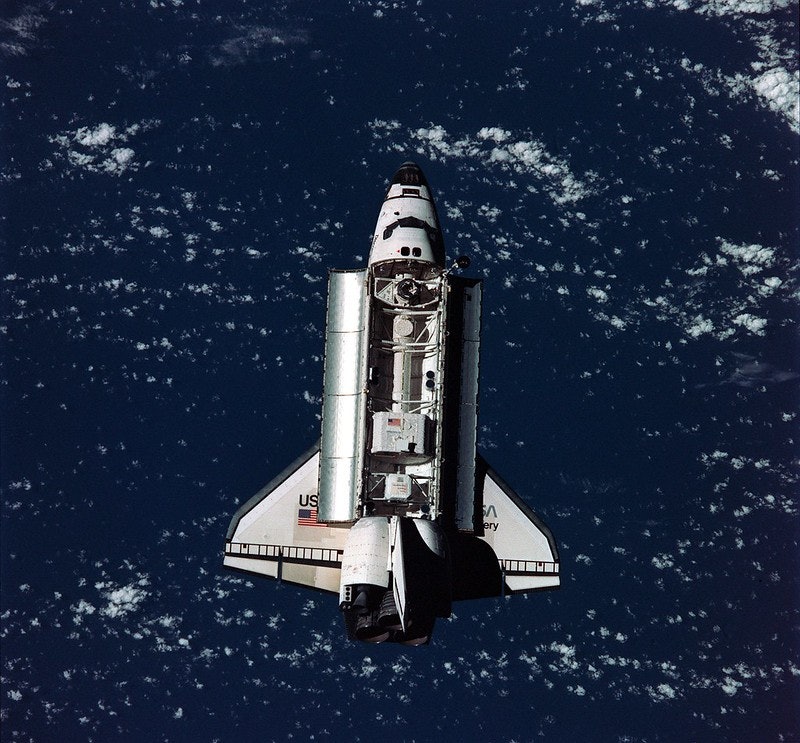
NASA needs a new workhorse. Since the retirement of the Space Shuttle in 2011, finding a reliable ship to resupply the ISS — with parts, experiments, and people — has been a high, if slow priority. This is why this month the folks at NASA are eagerly awaiting for the Boeing Starliner to launch its first astronauts into space. Astronauts Butch Wilmore and Suni Williams, veterans of the Space Shuttle and the Russian Soyuz, are expected to fly this soon aboard the Starliner when it makes its inaugural crewed flight. But Starliner has undergone a string of delays due to a valve issue of its rocket and, more recently, a helium leak. The latest slated launch date is set for May 21.
Starliner’s development happened alongside SpaceX’s Crew Dragon, which has already been delivering astronauts into space since 2020. Both spacecraft are privately-owned successors to NASA’s Space Shuttle, the iconic workhorse that transformed low-Earth orbit into humanity’s farthest outpost.
The Space Shuttle was, if nothing else, a hard worker for NASA that was instrumental in building the International Space Station (ISS). Here, astronauts live and work while orbiting our planet at 17,500 miles per hour, with nothing outside their walls that would support life. The ISS therefore requires constant upkeep and occupants. Ensuring that passengers and cargo regularly reach the ISS is critical.

When the Shuttle retired in 2011, NASA turned to SpaceX and Boeing for “dissimilar redundancy.” This means there’s a backup plan to reach space, but one where NASA doesn’t have to be reliant on just one company or rocket. How dissimilar? A comparison between these two and the original Space Shuttle offers a revealing look at how we will get people and equipment orbital for the foreseeable future.
How often will Starliner and Crew Dragon go into space?
Crew Dragon has flown twice a year with astronauts onboard since May 2020. According to Boeing’s website, Starliner also plans to have a “six-month turnaround time” once it actually starts flying.
Boeing and SpaceX received contracts from NASA to build services to and from low-Earth orbit in 2014. But the Boeing Starliner hasn’t flown yet. Starliner failed to dock at the ISS during its first uncrewed flight demonstration, called Orbital Flight Test, in late 2019. Earlier that same year, SpaceX succeeded at its first uncrewed flight, Demo-1. Starliner did dock with the space station during Orbital Flight Test 2 in 2022. But two major problems with the landing parachute and flammable wiring tape kept the project grounded for more time. Starliner is finally at the launch pad at Cape Canaveral Space Force Station in Florida. At the time this was written, Starliner was undergoing additional testing after a small helium leak, with launch slated for May 21.
The most missions that the Space Shuttle ever flew in a single year was eight, but that was much less than the 26 it was meant to fly each year, Jennifer Levasseur, space shuttle museum curator at the Smithsonian National Air and Space Museum, tells Inverse. This was the first time NASA was trying out a reusable spacecraft (Mercury, Gemini and Apollo capsules were single use). Making a rocket reusable was meant to bring costs down. But the opposite happened, Levasseur says. NASA ended up spending more time and money on components that weren't reusable. In addition, the Shuttle had to be “revitalized after every mission." This further contributed to the time and money spent on each mission.

How much did each of their flights cost?
Calculating the total cost of one single flight can be tricky. One way to estimate it is to take the price tag of the program and divide by the number of launches. When doing this, Levasseur told Inverse that in today’s terms, each Space Shuttle launch cost would have averaged out to an astonishing $1.6 billion.
These high costs became harder to justify after the 2003 Columbia tragedy diminished the program’s popularity. When NASA turned to the private sector to develop human-rated spacecraft for low-Earth orbit, safety and low-cost were critical. Now, rather than building out the launch and space vehicles itself, NASA would just pay fixed-contracts for development — and eventually just for seats.
“We don’t break up the numbers into missions or seats because the funds are mixed between developmental and rotation missions. It’s very complex and some details are protected by proprietary rules for the company when it comes to some costs. That’s why we present it as the total received,” a NASA representative tells Inverse in an email.
But, implementing the math of total program cost divided by flights, a picture emerges.
NASA has given Boeing $5.18 billion for Starliner thus far, according to the NASA representative. Divided by seven — six flights in-contract and the upcoming Crew Flight Test — and the cost averaged out across each human spaceflight is $740 million.
Crew Dragon’s number is half that price tag. That’s perhaps owing to its ongoing success, already having racked up nine crewed flights and in contract for a handful more. The fifteen total flights, divided by the $5.516 billion NASA has paid for development and contracts thus far, works out to an average of $368 million per Crew Dragon flight.

Both are a bargain compared to the Space Shuttle.
Due to the anticipated end of the ISS by 2030, these numbers may be unlikely to change by much. While it’s possible that NASA may seek more Starliner or Crew Dragon flights than current contracts cover — which may bring down the averaged cost per flight — each mission goes up every six months. All in all, six more Crew Dragon flights (roughly three years from start to finish) and six Starliner flights in contract (another three years) fills up the calendar years until 2030.
Craft, crew, and size.
The Space Shuttle, Crew Dragon, and Starliner are all reusable spacecraft. But how they’re reused differs quite a bit.
The Crew Dragon is the only one of the three to launch on a rocket that’s also reusable, SpaceX’s Falcon 9. The orange external tank that featured prominently on Space Shuttle launches was single use. The United Launch Alliance (ULA) Atlas V that will lift the Boeing Starliner is expendable, too.
Crew Dragon and Starliner spend half a year in space, roughly 12-fold longer than Shuttle ever did. According to NASA, the longest time that a Space Shuttle spent in space was 17.5 days, for mission STS-80 in 1996.

If Crew Dragon and Starliner can be compared to Mini Coopers, the Shuttle was a U-Haul truck. Their purposes overlapped, but ultimately, the Shuttle could place large chunks of technology into space — like satellites, the Hubble Space Telescope, and entire segments of the ISS. Crew Dragon and Starliner don’t have that capacity, and are centered more towards being astronaut vehicles. Further, Crew Dragon and Starliner are both designed to carry no more than four astronauts to the ISS, while the Shuttle could carry up to eight passengers.
The Mercury and Gemini programs of the Space Age proved that astronauts could conduct experiments in space inside their capsules, without transfering to another larger vehicle. If and when NASA retires the ISS, Levasseur says it’s possible Crew Dragon and Starliner could be used in much the same way.
All three differ when it comes to landing. Crew Dragons splash down off the coast of Florida; Boeing Starliner will descend towards a landing spot in the American southwest; and the plane-shaped Space Shuttle landed on a runway.
SpaceX has four Crew Dragons, although some have flown more often than others. With the recent flight of Crew-8, the capsule called Endeavor, has already reached the maximum number of flights that Crew Dragon spacecraft are qualified for, according to Space.com.
Boeing has built three Starliners so far, but only two — called Spacecraft 2 and 3 — will fly to space, a Boeing representative told Inverse in an email.
Starliner and Crew Dragon are quite a departure from the Space Shuttle, though both were created to carry the Shuttle’s human spaceflight legacy into the future. Other contenders, like Sierra Space’s Dream Chaser space plane, more closely resembles the Shuttle’s iconic facade. The inaugural flight of this uncrewed, cargo spaceship could happen later this year.







